Retaining walls installation is highly beneficial for managing a sloped environment. However, this outdoor element is more than just functional. There are numerous inventive ways to use it to enhance the character and beauty of your property. Some retaining wall landscaping designs are designed to be the yard’s main point. As a result, you can incorporate these walls into your outdoor space even if they are not necessarily necessary.
We’ll offer eight of our favorite retaining wall concepts to demonstrate some of the possibilities. We hope they inspire you to make a radical change to your outdoor environment!
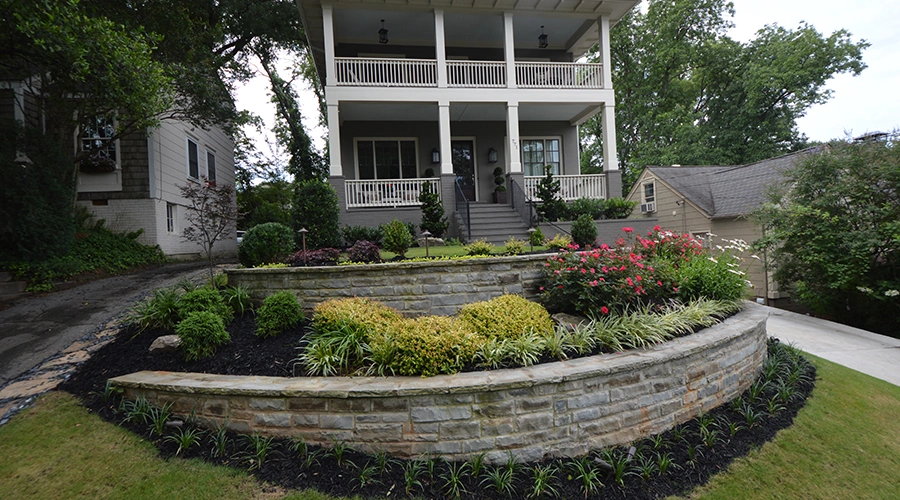
What is a Retaining Wall?
A retaining wall’s purpose is to retain soil, rocks, or other materials. If your property contains slopes, embankments, or substantial elevation changes, you may require a retaining wall to assist in stabilizing the land. Retaining walls are effective at preventing erosion and strengthening slopes.
Retaining walls can also be used to sculpt and shape the landscape. Even if you don’t need them for added support, they can provide visual appeal to your property. Some of the best retaining wall ideas are simply decorative.
Retaining Wall Blocks and Materials:
When and if you decide to create retaining walls on your property, part of the planning process will be identifying the best material. You’ll need to make a decision based on the wall’s purpose and your preferred style.
Interlocking retaining wall blocks are commonly used for retaining walls. Concrete is a strong and enduring material. It can also be shaped to resemble stone or brick. Aside from concrete, here are some other popular materials for your retaining wall:
- Natural stone, such as limestone or the local fieldstone
- Brick retaining wall
- Modular concrete blocks
- Pressure-treated timber beams or boards
- Large, stacked boulders
- Gabions (wire cages or baskets full of rocks)
- Stacked soil reinforced with mesh or anchors
Top Retaining Wall Ideas To Enhance The Beauty Of Your Property
There are several ways to use retaining walls on your property, but here are eight of our favorite retaining wall landscaping ideas:
Build Terraced Garden Beds
Create terraces in your yard by using retaining walls. Fill each terrace with flowers, herbs, vegetable gardens, and even miniature fruit trees. If you have a large, sloped backyard, this could be an excellent backyard retaining wall option for you.
Create a staircase
Use a retaining wall to create a stairway that connects the higher and lower levels of your property, making it easier to access all of it. Have you always wanted to transform the lower half of your yard into a zen meditation garden or a secret gathering spot with a fire pit? A staircase retaining wall allows you to access and utilize the entire land.
Display Your Artwork
If you’re already intending to build an interlocking retaining wall block on your property, think about adding giant boulders, sculptures, or mosaics onto the exposed surface. You may even use lights to highlight your unique traits. You’ve transformed a functional landscaping feature into a spectacle that will highlight your ingenuity and transform your yard into a one-of-a-kind meeting area.
Building a Living Wall:
One of our favorite backyard retaining wall ideas is to build a living wall. This approach can be used to boulders, gabions, timber beams, or retained earth. Create soil pockets within the wall and plant seeds so that greenery can grow through it. Consider planting cascading flowers or vines to transform your wall into a stunning live display.
Create Unique Seating Area:
Do you want to create a one-of-a-kind outdoor gathering space for your friends and family? Add built-in bench seating to the top of your retaining wall to enjoy the view of your entire property. Installing a fire pit will make the place even more special.
Add Privacy to Your Patio
One of our greatest patio retaining wall ideas is to strategically put L-shaped retaining walls to provide privacy on your patio. This is a great option if your patio overlooks a public road or if you have neighbors next to or behind you.
Put in a waterfall
For the ultimate landscaping showpiece, utilize your retaining wall as a backdrop for a descending cascade or other imaginative water feature. The sight and sound of falling water will bring peace to your home and be a terrific conversation starter at outdoor events.
Why are Retaining Walls Used?
Soil Retention: Retaining walls essentially hold back soil, preventing erosion and landslides. They can assist level sloping lands or protect buildings and infrastructure from soil erosion or damage caused by natural disasters like floods or earthquakes.
Creating Terraces: Terraces can be created on sloping lands by using retaining walls. This can enhance usable space on the property and provide areas for outdoor living, gardening, or recreation.
Look Appeal: Retaining walls can be created to compliment the project’s overall design or to generate a distinct look. They can be made of a variety of materials, including concrete, stone, or wood, and are designed to integrate smoothly into the surrounding terrain.
Improved Drainage: Drainage systems can be incorporated inside retaining walls to keep water from gathering behind them. This can assist avoid damage to the wall and nearby structures while also improving the general drainage on the site.
Structural Support: Retaining walls can provide support for buildings and other infrastructure. They can assist disperse the structure’s weight and stabilize the foundation.
Choose the Right Retaining Wall Contractor Today!
Take your time and find the proper provider to install your retaining wall. Remember that a retaining wall’s primary purpose is to stabilize your land. Make sure the business you pick for the work does the required engineering before beginning the project to guarantee that the wall they build is both safe and functional.
You also want to select a company that understands and accurately executes your project idea. This manner, you’ll have a functional and beautifully appealing retaining wall. Fortunately, Outdoor Makeover and Living Spaces can handle it all for you. Our local teams of retaining wall landscapers across the United States have the experience and understanding to design a retaining wall that fits your needs, budget, and artistic vision.
Frequently Asked Questions
A retaining wall is a structure designed to hold back soil and prevent erosion. It is important for preventing soil movement and providing support for landscaping, creating level areas, and enhancing the aesthetic appeal of a property.
Retaining walls can be built using various materials, including concrete blocks, poured concrete, stone, brick, timber, and gabion baskets. Each material has its own advantages in terms of durability, appearance, and cost.
The height and length of your retaining wall depend on the slope of the land, the purpose of the wall, and local building codes. It’s essential to consult with a professional to ensure the wall is designed to meet safety standards and perform its intended function.
Permit requirements vary by location. In many areas, a permit is required for retaining walls over a certain height, usually 4 feet. Check with your local building department to determine if you need a permit for your project.
The installation process typically involves planning and design, excavation, laying the foundation, constructing the wall, backfilling with soil, and finishing with landscaping. Professional installation is recommended to ensure structural integrity and longevity.
Proper drainage is crucial to prevent water buildup behind the wall, which can cause pressure and damage. This can be achieved by installing drainage pipes, weep holes, and using gravel or other drainage materials behind the wall.
Retaining walls require minimal maintenance, but it’s important to regularly inspect for signs of damage or movement. Keep the drainage system clear, control vegetation around the wall, and address any issues promptly to maintain the wall’s integrity.
While small retaining walls can be DIY projects, larger walls or those in critical areas should be installed by professionals. Proper design, materials, and construction techniques are crucial for safety and durability, making professional installation a wise choice.
The cost of installing a retaining wall varies based on factors such as material, size, design complexity, and labor. On average, costs can range from $20 to $50 per square foot. Obtaining multiple quotes from reputable contractors can help you determine a more accurate estimate for your project.
Common issues include poor drainage, improper design, soil erosion, and structural failure. These can be prevented by ensuring proper drainage, using suitable materials, following engineering guidelines, and performing regular maintenance. Consulting with a professional during the design and installation phases can help mitigate these risks.

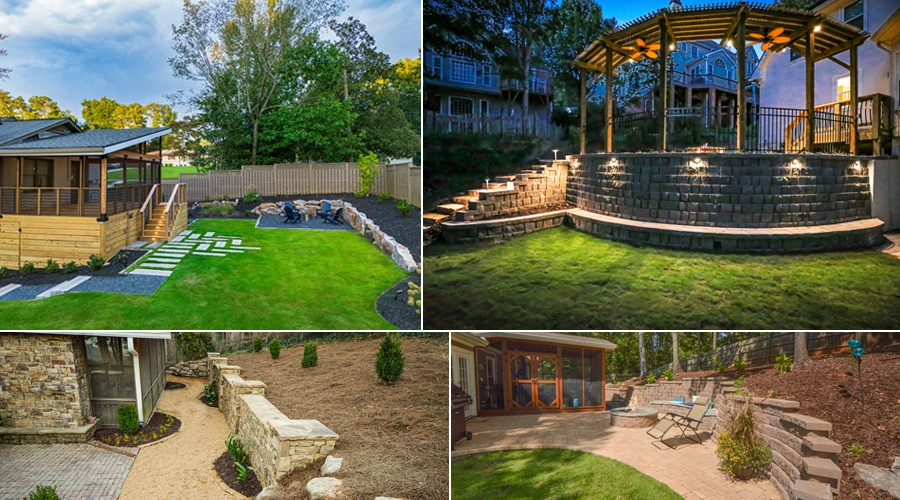
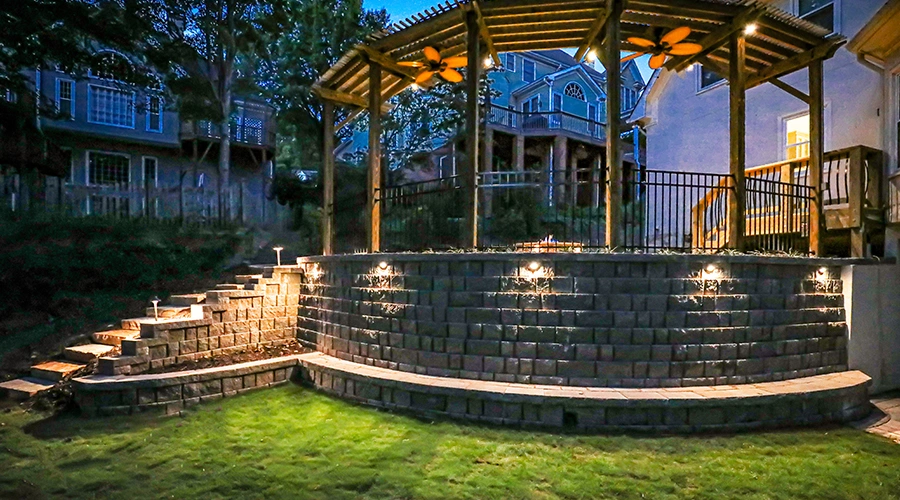
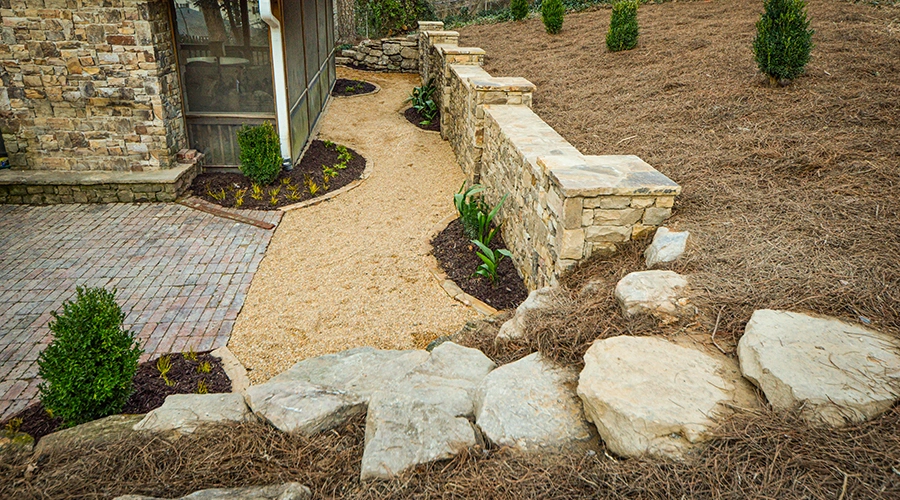
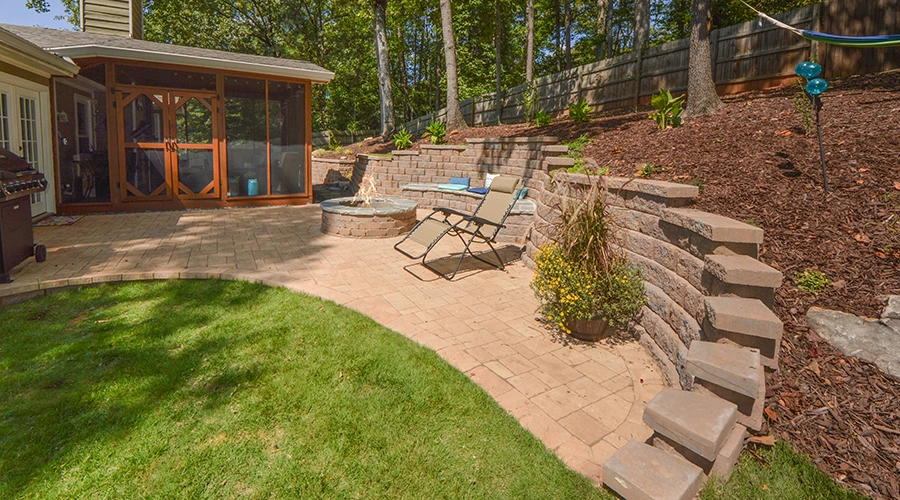
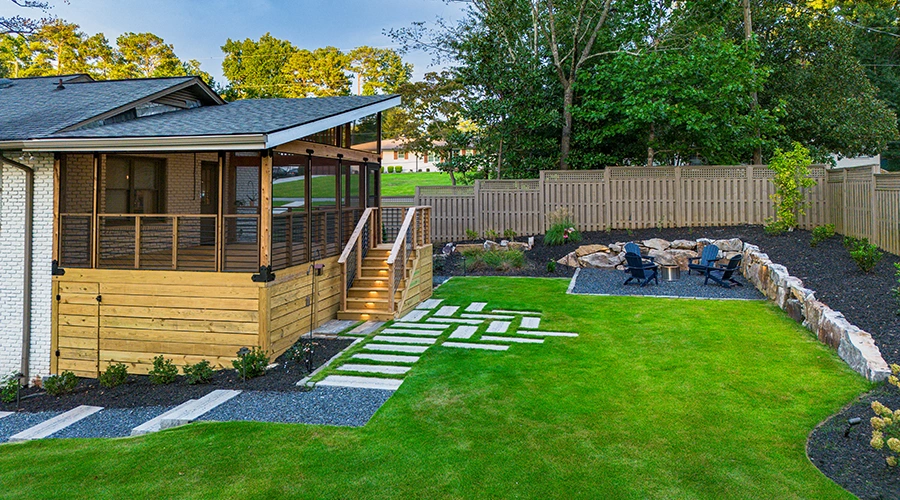
 Luxury Hardscaping Ideas to Enhance Your Atlanta Property
Luxury Hardscaping Ideas to Enhance Your Atlanta Property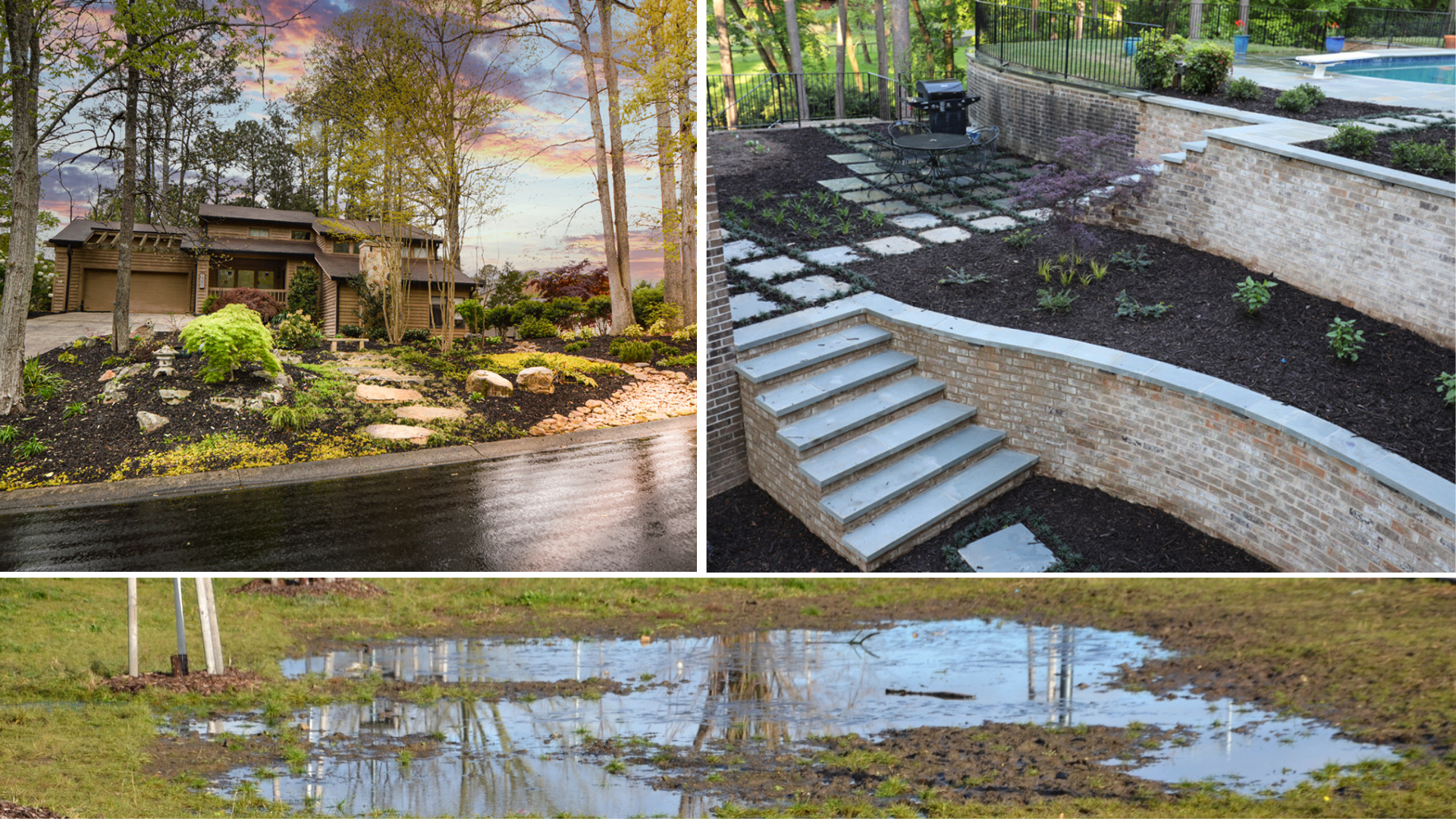 Protect Your Paradise: Solutions for Managing Drainage and Erosion in Your Yard
Protect Your Paradise: Solutions for Managing Drainage and Erosion in Your Yard Retaining Walls: The Functional and Aesthetic Benefits
Retaining Walls: The Functional and Aesthetic Benefits
LET'S BE SOCIAL: